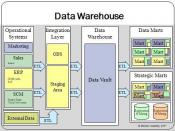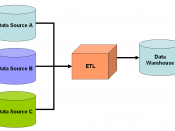Data warehousing provides the large-scale infrastructure for decision support inmodern organizations. Data warehousing development methodologies have been developedby hardware & software vendors and consulting companies. There has been little academiccontribution to this work. This paper analyses four influential methodologies using the Avisonand Fitzgerald (1995) comparison framework. The analysis highlights a number of issues orareas where conceptual and empirical research may significantly improve developmentpractice.
KEY WORDS: data warehousing, systems development, development methodologies, decisionsupport.
1. IntroductionSystems development methodologies have been at the core of informationsystems practice since the 1960s. A systems development methodology is a"recommended collection of philosophies, phases, procedures, rules, techniques,tools, documentation, management and training for developers of informationsystems" (Maddison, 1983 cited in Avison & Fitzgerald, 1995, p 418). There arehundreds of methodologies available ranging from general methods like structuredsystems analysis & design method and rapid application development to proprietarymethods like Ernst & Young's Navigator. Fitzgerald (1997) argues that most currentmethodologies are based on concepts developed in the period 1967-1977.
He alsoargues that changes in the organisational and technical environment since that periodhave been so great that these methodologies need fundamental review and believesthat professional practice is currently leading theory in the developmentmethodology area. This has usually been the case but the divergence is probablygreater now, in the age of the Internet, than at any other time.
A data warehouse is a set of databases created to provide information to decisionmakers. Typically, the applications used to access a data warehouse provide agraphical interface that facilitates the creation of ad hoc reports. It is usual for thesedelivery systems to provide a multi-dimensional conceptual view of the data to theend users. Data warehouses contain both current and historical data and are typicallyvery large. Building and implementing a data warehouse is a complex process thatincludes acquiring information requirements from business executives and designingthe data...


